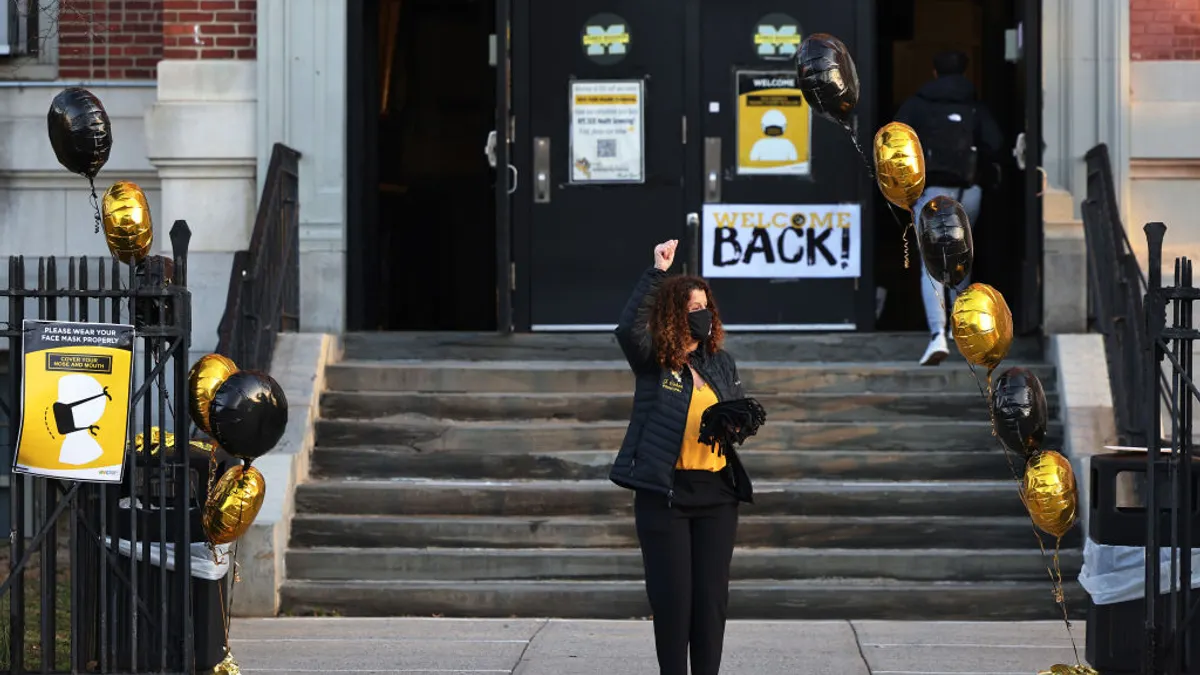Will the U.S. Supreme Court weigh in on another high-profile education case this term?
That is seeming more likely, given that the justices have deliberated multiple times in the past month whether to accept a closely watched case concerning admissions policies in K-12 public schools. Typically, multiple such deliberations signal the high court's interest in hearing or weighing in on a case.
Petitioners in TJ v. Fairfax County School Board last August asked the high court to review the case. Their request came less than two months after the justices struck down race-conscious admissions practices at colleges in a case brought by Students for Fair Admissions against Harvard University and the University of North Carolina at Chapel Hill.
Prior to deciding whether to hear a case in any given term, justices meet in private at least once to weigh its merits. In most cases, the outcomes of these conferences and decisions to grant review are announced the next week after those deliberations.
Sometimes, however, justices consider a case over multiple meetings — or conferences. Reasons to relist a case include: trying to gather the four votes needed to grant review, wanting to more closely dissect a case, or deciding to write an opinion accompanying a case's rejection or reversal without hearing oral arguments.
The Fairfax case has been on the justices' conference list at least four times and relisted three times, most recently distributed for conference on Jan. 19. It will also be relisted for consideration in the future, according to a Supreme Court spokesperson.
"When a case is deliberated during multiple conferences, that is usually a sign that there is at least some interest in taking the case," said Paul Collins, an expert in legal decision-making and a professor and director of legal studies at University of Massachusetts Amherst's political science department.
However, it's also a signal that the decision to grant or deny certiorari is being postponed for some reason, such as seeing if a policy has changed after a related court decision came down, added Collins.
Relisted cases have a higher chance to be granted review than the rest of petitions, said John Elwood, an attorney who has argued 10 cases in front of the Supreme Court and head of appellate and Supreme Court practice at law firm Arnold and Porter.
Porter and his colleague Ralph Mayrell, a litigator at Kramer Levin Naftalis and Frankel, studied data from five Supreme Court terms between 2016 and 2020. In that time, between 31% and 43% of petitions relisted at least once were eventually granted review. Up to three-quarters of all cases granted certiorari were relisted at least once.
"The upshot is that one or two relists is statistically associated with a strong chance the Supreme Court grants review," said Elwood in an email.
While there's still a chance the case is accepted for oral arguments after two relists, there's also a growing likelihood that justices instead issue some sort of opinion — which can include a dissent against other justices' decision to deny a case or a review of the case and reversal of the lower court's decision without oral arguments.
Elwood said he thinks the justices' interest in the Fairfax case will result in a denial of the case, with an opinion either dissenting against that denial or emphasizing that the denial does not mean an endorsement of the lower court's ruling.
However, he said, "there’s still some chance of a grant" of cert.
For example, the Masterpiece Cakeshop case — another high-profile case, involving a Christian baker who refused to bake a cake for a same-sex couple — was relisted over 10 times before justices accepted it for oral arguments.
Petitioners claim ‘new species of racial discrimination’ in admissions
The education case in question hinges on whether the Fairfax County School Board violated the 14th Amendment's equal protection clause when it overhauled its admissions criteria at Thomas Jefferson High School for Science and Technology, consistently one of the top-ranked STEM schools.
In 2020, in an effort to diversify incoming classes, the school board decided to evaluate "experience factors" and drop its entrance exam and teacher recommendations requirements. Prior to that change, the school's enrollment was 73% Asian American. Just after, that group made up 54% of the class of 2021.
Parents who are now asking the Supreme Court to review the case claim the drop in Asian American enrollment was intentional and discriminatory. Their appeal comes after the 4th U.S. Circuit Court of Appeals ruled in the school board's favor in May 2023.
"A new species of racial discrimination has been spreading through some of our largest public school systems" that "takes the form of facially race-neutral admissions criteria intentionally designed to achieve the same results as overt racial discrimination," parents wrote in their petition to the justices.
The school board, however, denied any discriminatory intent in its response.
"The policy was not designed to achieve any sort of aggregate racial balance," attorneys said in the November 2023 response, adding that "race-neutral measures are a permissible way of fostering diversity."





















